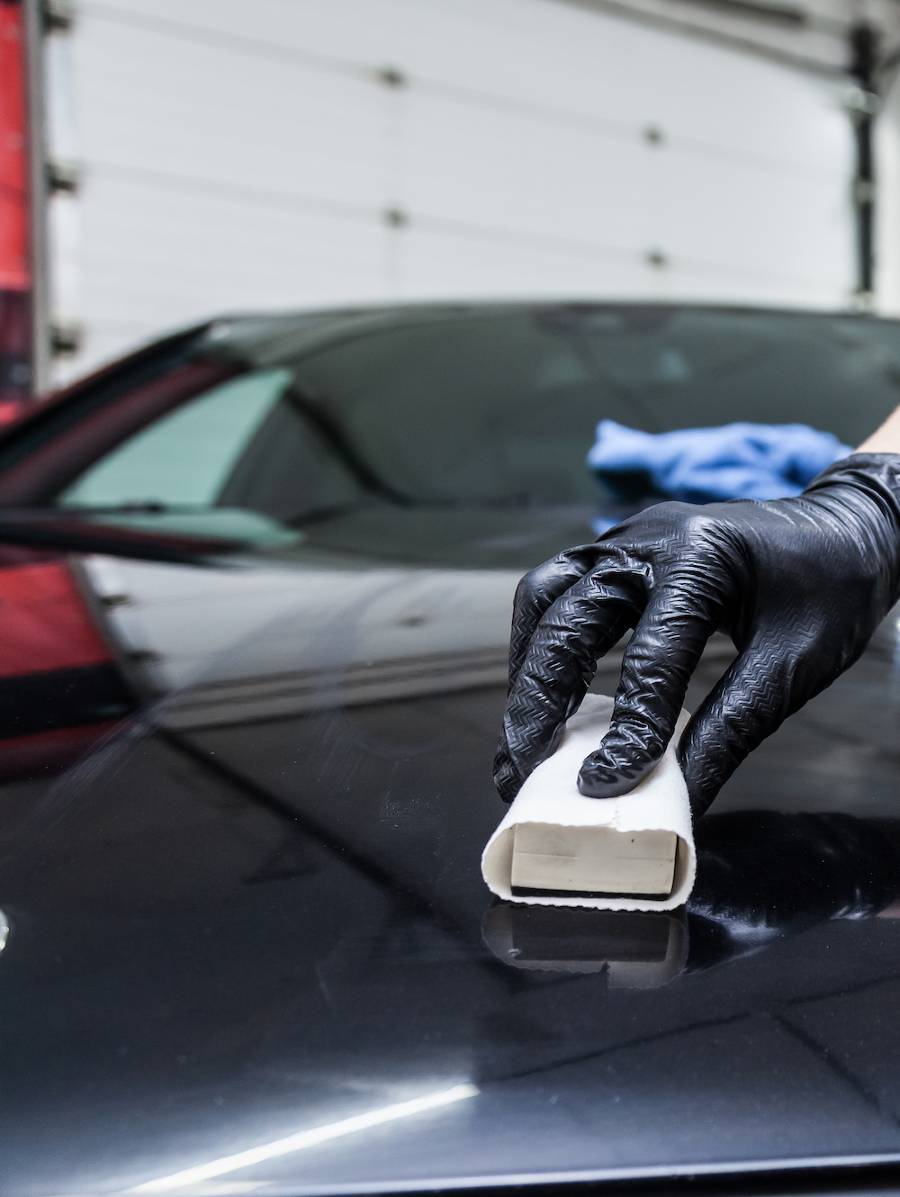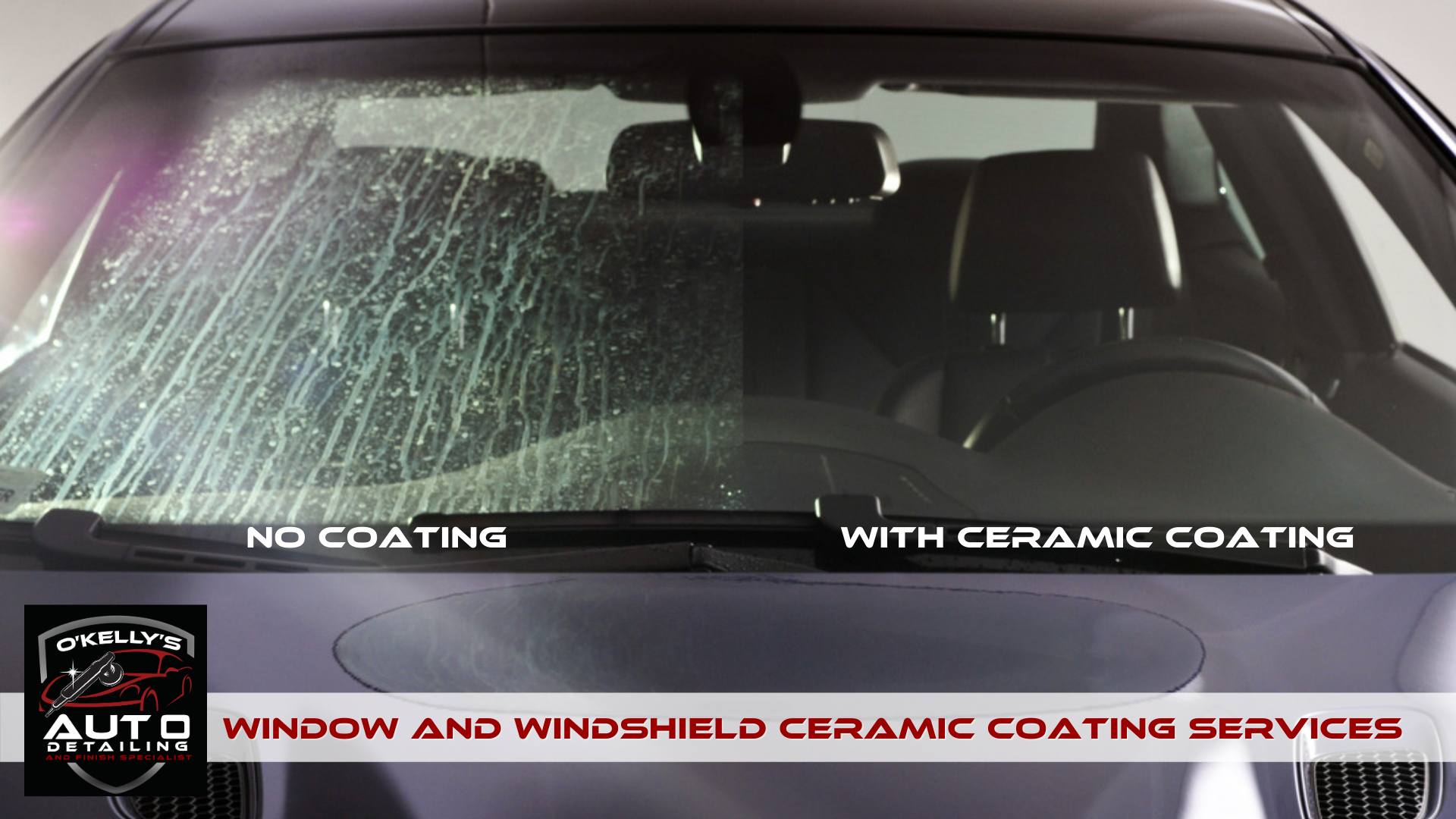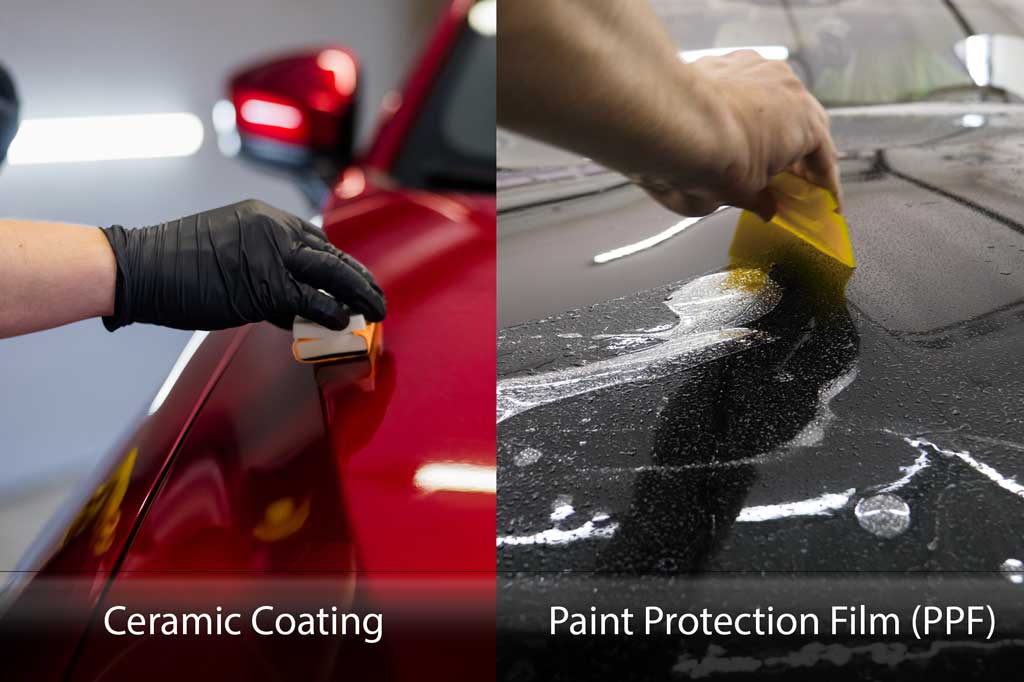Ceramic Coating vs. Traditional Wax: Which is Right for Your Vehicle?
Ceramic Coating vs. Traditional Wax: Which is Right for Your Vehicle?
Blog Article
The Role of Ceramic Layer in Securing Your Automobile's Paint From Environmental Damage
Ceramic coating has actually become an advanced solution for auto proprietors seeking to protect the integrity of their lorry's exterior. By developing a durable chemical bond with the paint, this sophisticated technology supplies a powerful obstacle against numerous ecological dangers, such as UV rays, acid rain, and impurities. Comprehending the comprehensive advantages and the intricacies of the application procedure is crucial for maximizing its performance. As we explore the subtleties of ceramic coating, it ends up being noticeable that the option to apply this protective procedure can dramatically influence your car's long life and visual.
What Is Ceramic Finish?
Ceramic coating is an advanced liquid polymer used to the external surface areas of a car, made to offer a durable layer of defense for the paint. This innovative option develops a chemical bond with the car's manufacturing facility paint, developing a resistant and hydrophobic guard. The finishing includes nanoparticles that complete the tiny blemishes in the paint, causing a smooth surface area that improves gloss and radiate.
Commonly, ceramic finishes are readily available in various formulations, enabling various degrees of defense and longevity. While some products can last for numerous months, others supply security for a number of years, depending upon the thickness of the application and ecological aspects. The application process calls for careful preparation, including cleaning, sanitizing, and polishing the lorry's surface area to guarantee optimal attachment of the finish.

Advantages of Ceramic Finish
One of the key advantages of using a ceramic covering is the exceptional protection it provides to vehicle paint. This sophisticated covering creates a durable layer that guards the lorry's surface area from a variety of ecological risks, consisting of UV rays, acid rain, bird droppings, and tree sap. By giving this robust protection, ceramic finishings considerably lower the danger of fading and etching, maintaining the automobile's visual appeal gradually.
Along with security, ceramic coatings are renowned for their hydrophobic properties, which push back water and dirt, making it simpler to maintain a clean automobile. This self-cleaning effect decreases the regularity of cleaning, saving both time and sources. Furthermore, ceramic layers improve the deepness of the paint's gloss, resulting in a sleek and dynamic look that boosts the total appearance of the car.
An additional notable benefit is the durability of ceramic layers. Unlike traditional waxes or sealants that require frequent reapplication, ceramic coverings can last a number of years, using a cost-effective service for cars and truck proprietors looking for long-lasting security. Generally, buying ceramic finish brings about boosted durability, reduced upkeep, and continual visual appeal for vehicle paint.
Exactly How Ceramic Finishing Functions
A ceramic coating operates with a chemical bonding process that develops a safety layer on the car's paint surface area. This ingenious solution utilizes innovative nanotechnology, where tiny fragments of silica are put on hold in a liquid type - ceramic coating. Upon application, these particles bond with the factory paint, developing a hydrophobic and long lasting layer that improves the lorry's surface area
The major part of ceramic coatings, silicon dioxide (SiO2), adds to the layer's strength and resilience. When treated, the layer transforms right into a difficult, glass-like surface that guards the paint from environmental pollutants such as dirt, UV rays, bird droppings, and tree sap. This molecular bond leads to a surface area that is not only immune to scrapes however likewise much easier to clean, as dirt and grime are less most likely to adhere.
In addition, the hydrophobic buildings of ceramic finishings cause water to grain and slide off, minimizing the possibilities of water spots and natural resource. This protective obstacle efficiently lengthens the life of the paint and preserves the lorry's aesthetic allure, offering car owners a long-lasting service for paint defense.
Application Process of Ceramic Finish
When taking into consideration the application of ceramic layer, prep work is vital to achieving optimum outcomes. Any kind of flaws or scratches must be attended to at this phase, as the finish will certainly bond with the surface beneath.

Ceramic covering is then applied in tiny sections, usually using an applicator pad. The vehicle must be left to heal in a controlled environment to permit the finishing to completely bond with the paint.
Long-Term Maintenance and Treatment
Achieving an effective ceramic finish application establishes the structure for long-lasting defense, but appropriate upkeep is essential to preserving its benefits. Normal washing is essential; making use of a pH-neutral car additional reading hair shampoo will assist keep the layer's integrity without causing damages. Avoid automated car cleans that use rough materials, as they can jeopardize the layer's surface.

Furthermore, applying a ceramic covering upkeep spray can enhance the existing layer, offering an extra boost in protection and shine. It's suggested to do this every 3 to 6 months, depending upon ecological direct exposure.
Finally, car parking in shaded locations or making use of automobile covers can stop long term exposure to damaging UV rays and environmental impurities, better prolonging the life of your ceramic finish. By sticking to these maintenance practices, you can guarantee your lorry's surface continues to be protected and aesthetically appealing for years to come.
Conclusion
In summary, ceramic layer functions as an important safety action for automotive paint, successfully protecting lorries from a variety of ecological dangers. Its ability to create a durable hydrophobic obstacle not just improves aesthetic allure yet likewise dramatically lowers the regularity and intensity of maintenance called for. The long-lasting nature of this innovative polymer emphasizes its worth in preserving automobile honesty and appearance, eventually adding to a more durable and aesthetically appealing automotive surface.
Ceramic finish is an advanced fluid polymer used to the external surfaces of a vehicle, created to provide sites a long lasting layer of protection for the paint. Ceramic finishings improve the depth of the paint's gloss, resulting in a polished and vibrant look that boosts the total appearance of the lorry.
A ceramic finishing operates via a chemical bonding procedure that develops a protective layer on the car's paint surface.The main part of ceramic coverings, silicon dioxide (SiO2), contributes to the finishing's stamina and durability.In recap, ceramic finishing serves as an important protective procedure for auto paint, efficiently shielding automobiles from a range of environmental risks.
Report this page